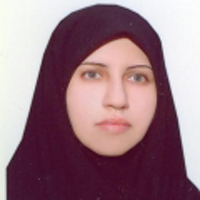Study of genetic diversity of some genotypes of iranian wild mint (Mentha longifolia L.) using ISSR marker and its correlation with dry yield and essential oil content
This study aimed to investigate the genetic diversity of different genotypes of this valuable medicinal plant under the same culture condition which can be used as an introduction to domestication, germplasm conservation, and possible cross in the future.
In this study, after preparing 20 different genotypes from all over Iran, they were cultivated in complete randomized blocks design with three replications under the same condition. After extraction of DNA, the survey of genetic diversity using 12 ISSR markers from 15 markers was conducted by polymerase chain reaction (PCR). The essential oil for each genotype was extracted by water distillation. The dry yield based on gr/m2 and essential oil content (w/w, based on dry weight) were measured. Furthermore, the correlation of molecular markers with dry yield and essential oil content from each genotype was determined using stepwise regression.
The mean percentage of polymorphism determined in all the genotypes was 91.97. The number of polymorphic bands for each primer varied from 5 to 9 and a total of 89 replicate bands were scored, of which 82 bands showed polymorphism. The average content of primer information polymorphism (PIC) was estimated to be 0.31 and the IS1 primer showed the highest PIC (0.46). The Ni and Shannon indices for IS1 primers were 0.43 and 0.61, respectively. Cluster analysis using the Jaccard similarity coefficient and UPGMA algorithm divided the studied genotypes into four groups. The highest genetic distance was observed between Khuzestan and Qazvin genotypes with a coefficient of 0.39 and the lowest between Kerman-2 and Kerman-4 genotypes with a similarity coefficient of 0.77. Stepwise regression showed that the IS10 primer has a coefficient of 0.70 with the essential oil percentage and dry matter yield.
The results of this study showed that ISSR markers can be effectively used to study the genetic diversity of wild mint genotypes and will provide the possibility of breeding. So that, IS1 and IS10 primers were introduced as the best markers. Also, Khuzestan and Qazvin genotypes had the highest genetic distance.
- حق عضویت دریافتی صرف حمایت از نشریات عضو و نگهداری، تکمیل و توسعه مگیران میشود.
- پرداخت حق اشتراک و دانلود مقالات اجازه بازنشر آن در سایر رسانههای چاپی و دیجیتال را به کاربر نمیدهد.




